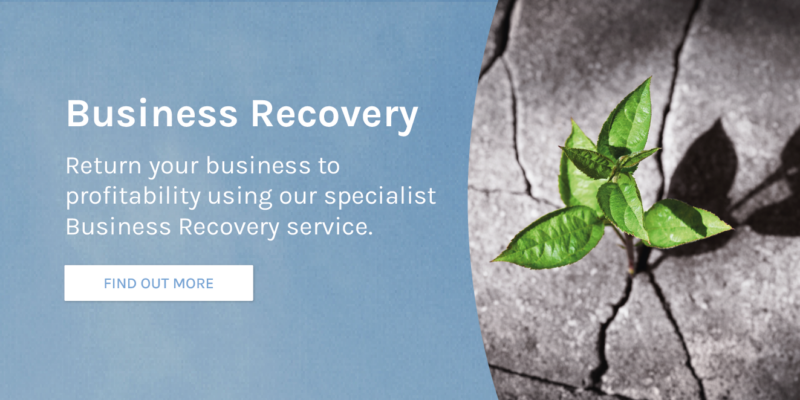Only a single percentage point increase in interest rates can add thousands to a typical SME’s borrowing costs. For businesses already operating on tight margins, this isn’t just an inconvenience — it’s a potential crisis waiting to happen.
Interest rates have become one of the defining financial factors for UK businesses in 2025. With the Bank of England’s base rate currently 4.25% — up dramatically from the levels of just a few years ago — small and medium enterprises are discovering that the era of ‘money for next to nothing’ is over.
But here’s what many business owners don’t realise: the effects of high interest rates on businesses extend far beyond just the repayment of loans. From changing customer behaviour to shifting supplier relationships, increased property values to cash flow issues, rising interest rates create a domino effect that can affect every corner of an operation.
This guide reveals exactly how interest rates affect businesses, what happens when rates rise, and, most importantly — how to protect your company when financial pressures mount.
Understanding How Interest Rates Really Work in Practice
Interest rates represent the cost of borrowing money, but their influence creates ripples throughout our economy. When the Bank of England’s Monetary Policy Committee adjusts the base rate, it triggers a cascade of changes that can make or break businesses within months.
The base rate directly determines what commercial banks charge for business loans, overdrafts, and credit facilities. However, the real impact goes much deeper. Interest rate changes affect consumer spending power, supplier pricing strategies, property values, and investor confidence — all factors that can dramatically alter your businesses performance.
Here’s the critical point most business owners miss: even if your company has no debt, rising interest rates will still affect your business through changed customer behaviour, supplier cost increases, and altered market conditions.
The Direct Impact on Business Operations: What Happens If Interest Rates Rise?
Immediate Borrowing Cost Increases
Rising interest rates hit businesses with variable-rate debt immediately and hard. Consider this example:
- Business loan: £150,000 at variable rate.
- Rate Increase: From 3.5% to 5.5%.
- Additional Annual Cost: £3,000.
- Monthly Cash Flow Impact: £250 extra every month.
For businesses with multiple loans, overdrafts, and credit facilities, these increases can compound quickly. Businesses are regularly seeing their monthly expenses increasing by £1,000+ when rates rise. And where does this money come from? Their working capital.
The Cash Flow Perfect Storm
High interest rates create a “cash flow perfect storm.” Three forces combine to squeeze businesses simultaneously:
- Higher borrowing costs drain cash from operations.
- Reduced consumer spending as customers face their own higher mortgage and credit costs.
- Supplier price increases as they look to pass on their increased finance costs.
This triple pressure particularly affects businesses with seasonal cash flow patterns or those relying on credit to smooth operations. The traditional safety net of overdrafts and credit lines becomes prohibitively expensive, potentially creating solvency issues for previously stable companies.
Consumer Behaviour Shifts
What happens when interest rates rise? Consumer behaviour changes both dramatically and quickly.
Higher mortgage payments and expensive credit cause consumers to:
- Delay making major purchases.
- Reduce non-essential spending.
- Seek cheaper alternatives.
- Extend payment periods.
Retail and hospitality businesses typically see an immediate impact, while B2B companies and essential services experience delayed but significant effects as their clients will likely be spending less.
Industry-Specific Effects: Who is Hit Hardest?
Property and Construction: Maximum Impact
The construction and property sectors will often experience the most dramatic effects from interest rate changes. Rising rates create immediate challenges including:
- Development projects become less viable as finance costs soar.
- Property demand drops as mortgages become unaffordable.
- Rental yields may improve as potential buyers become renters.
- Construction costs increase as suppliers face higher finance charges.
Property businesses often see rapid changes in project viability, with developments that were profitable at 3% rates becoming loss-makers at 6%.

Manufacturing and Export: Complex Calculations
Manufacturing companies face complex interest rate effects that work in multiple directions:
Negative impacts:
- Higher equipment finance costs.
- Increased working capital expenses.
- Supplier price increases.
Potential benefits:
- Currency effects may improve export competitiveness.
- Reduced domestic competition as other businesses struggle.
- Opportunities to acquire distressed competitors.
Service Businesses: Delayed but Significant
Professional services, consulting, and other service-based businesses often experience delayed effects. While their direct borrowing may be limited, client spending patterns shift as other businesses adjust to changing financial conditions.
Service businesses typically see:
- Clients delaying non-essential projects.
- Pressure on day rates and fees.
- Extended payment terms from struggling clients.
- Increased demand for cost-cutting services.
Strategic Responses: How to Navigate Rising Rates
Immediate Actions for Rising Rates
1) Conduct a Borrowing Cost Audit
List every loan, overdraft, and credit facility on your books. Calculate the impact of potential future rate increases on cash flow. A 2% increase across all borrowing isn’t unusual — it’s important to know if your business can absorb this cost.
2)Accelerate Invoice Collection
Cash becomes critically important in high-rate environments. As a result, you should look to implement:
- Automated payment reminders.
- Early payment discounts.
- Stricter credit terms for new customers.
- Regular credit checks on existing customers.
3)Strategic Pricing Reviews
Don’t just raise prices in response to interest rate rises — be strategic. Consider:
- Small, regular increases rather than large jumps.
- Value-added services that justify higher prices.
- Different pricing for new vs. existing customers.
Long-term Strategic Planning
1) Build Multiple Funding Sources
It’s important to never rely solely on traditional bank lending. Consider exploring:
- Invoice Financing: Typically less sensitive to base rate changes.
- Asset-based Lending: Secured on business assets.
- Government Schemes: Often offer better rates during difficult periods.
- Alternative Lenders: May provide more flexibility.
2) Focus on Efficiency Improvements
High-rate periods reward businesses that reduce their operating costs. Things to keep in mind include:
- Technology investments that reduce labour costs.
- Process improvements to increase productivity.
- Negotiate for better terms with suppliers.
- Energy efficiency improvements.
3) Strengthen Cash Flow Forecasting
During times of economic uncertainty, move from monthly to weekly cash flow monitoring. You should always be aiming to identify potential shortfalls or areas of uncertainty 8-12 weeks in advance as opposed to discovering issues as and when they arrive.

Recognising Warning Signs When Interest Rate Pressure Becomes Dangerous
Early Indicators of Financial Stress
Monitor these specific warning signs that suggest interest rate pressures are creating unsustainable conditions:
Immediate Red Flags:
- Consistently using maximum overdraft facilities.
- Struggling to meet loan repayments on time.
- Declining gross margins despite stable sales.
- Customers increasingly requesting extended payment terms.
Secondary indicators:
- Suppliers reducing credit terms or demanding payment on delivery.
- Difficulty securing additional credit when needed.
- Key staff expressing concerns about job security.
- Postponing essential equipment maintenance or replacements.
The Critical Decision Point
When standard cash flow management techniques prove insufficient, professional intervention becomes crucial.
This isn’t about failure — it’s about recognising when external expertise can preserve and strengthen your business. Early professional advice typically provides more options and better outcomes than waiting until crisis point.
Specialist insolvency practitioners can provide confidential assessments and outline available options, from arrangements with creditors to formal procedures that protect the business while addressing financial difficulties.
The 2025 Outlook and Preparation
Current forecasts vary, as any predictions depend on inflation control as well as economic stability — both of which are highly uncertain factors. Current expectations are that the interest rates will reach around 4% by the end of 2025 following further government cuts. However, some believe this number could be lower.
Due to this uncertainty, it’s important that you prepare for multiple scenarios. Don’t put all your eggs in one basket. Plan operational costs assuming rates remain at current level, while identifying opportunities to potentially capitalise should rates fall significantly. At the same time, it’s important that you implement measures to maintain financial flexibility in order to handle unexpected rate increases.
Your Next Steps: Building Interest Rate Resilience
Interest rate changes are a normal part of business cycles, but their impact doesn’t have to be devastating. Companies that understand these effects, plan proactively, and seek appropriate support when needed to maintain stability and even grow during challenging periods.
For UK SMEs facing interest rate pressures, remember:
- Support is Available: From alternative funding to professional insolvency advice.
- Early Action Provides Options: Don’t wait until problems reach crisis point to act.
- Professional Guidance Prevents Permanent Damage: Remember, temporary problems don’t have to become permanent setbacks
The businesses that emerge strongest from high interest rate periods are those that treat financial management as a core competency, monitor key indicators closely, and aren’t afraid to seek expert support when warning signs appear.
Is your business showing early signs of interest rate pressure? Professional assessment can help you understand your options and strengthen your position before temporary difficulties become permanent problems. Contact us today to find out more about how we can help you.






